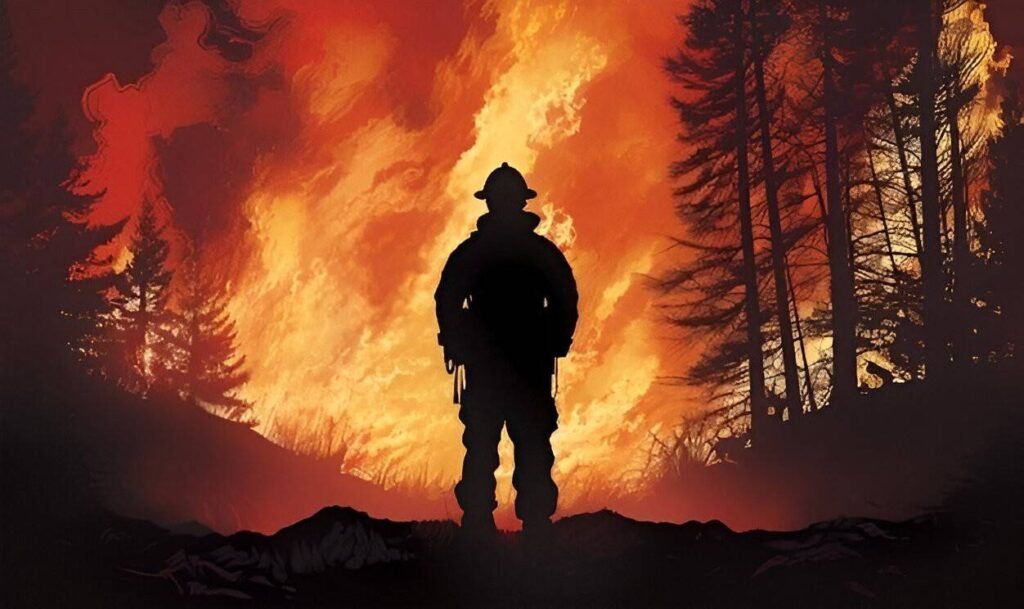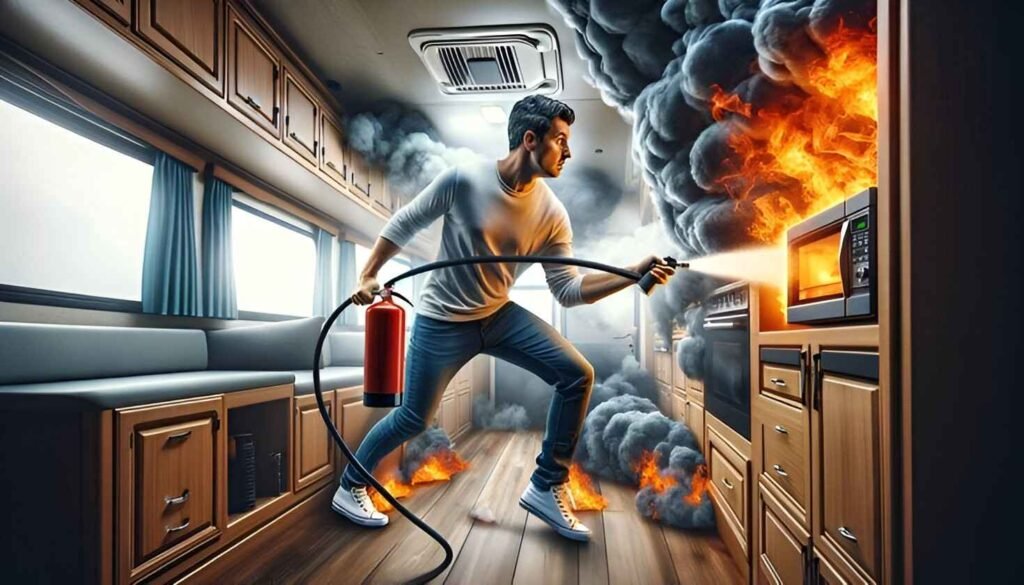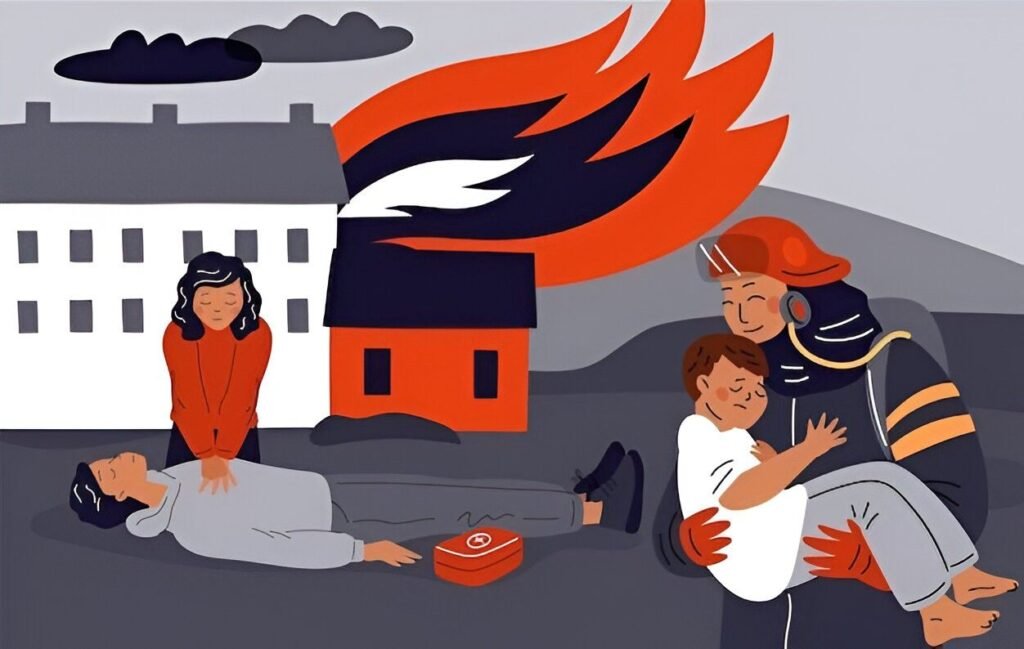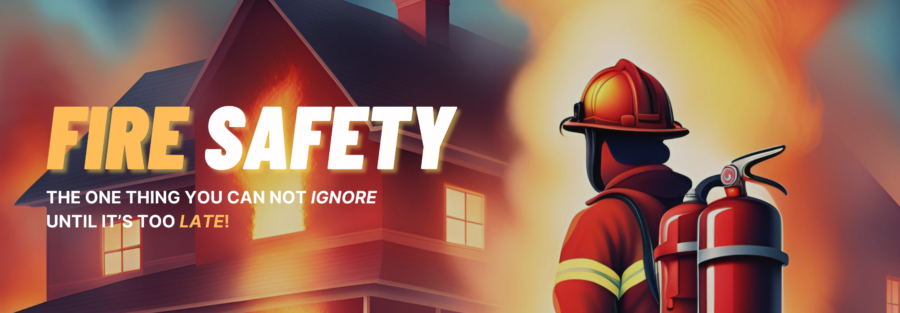“Fires kill more people annually than floods, hurricanes, tornadoes, and earthquakes combined.” (Ken Institute)

Understanding basic fire safety information is important for the protection of lives and property. This article will help you understand fire-related information, including its origins, safety guidelines, and necessary precautions to ensure safety during emergencies.
What Is Fire?
Fire is a powerful and destructive element that can be useful in many ways, but if it is exposed and not controlled properly, it can destroy everything. Fire is a chemical process that results in the occurrence of heat, light, and smoke. To generate a fire, a balanced ratio of heat, fuel, and oxygen is necessary. A shortage of any of these elements will restrict the occurrence of fire.
Understanding the Fire Triangle:
Before learning about the measures to prevent fires, it is important to know the concept of the “Fire Triangle.” This triangle consists of three key elements that are necessary for the existence of fire:
- Oxygen (to keep combustion going)
- Heat (to reach ignition temperature)
- Fuel (to create a chemical reaction that leads to fire)
If any of these elements are removed, the fire can be extinguished. This basic principle is the foundation of fire safety, and understanding it not only helps to control fires but also helps in reducing the chances of fire.
The Four Stages of Fire:
In order to follow the fire safety rules properly, it is important to know the four main stages of fire so that appropriate measures can be taken at each stage.
1. Early stage: This is the time when the fire is small and limited, usually confined to the place where it started. The smoke is reduced, and the fire can be easily controlled if detected and extinguished in time.
2. Growth Stage: During this stage, the flames become larger and spread more quickly as they gain more fuel. This is the time when the fire can be prevented from spreading further by taking immediate action.
3. Fully Developed Stage: This is the most dangerous and damaging stage of a fire, in which the structural elements can become weak and there is a risk of flashovers (sudden burning of all the surrounding material). The most important task at this stage is to evacuate people safely.
4. Decay Stage: The fire begins to lose strength, resulting in less heat and smoke. It’s important to fully extinguish the fire and prevent any potential reignition, as there may still be areas of heat and hidden flames.

Common Causes of Fire:
In addition to being aware of the different stages of the fire, it is also important to know what the potential risks of a fire may be. Fires can happen anywhere at home, in offices, and in public places. Knowing what causes fires can help us take precautions and prevent accidents. Here are some of the most common ways:
- Electrical hazards: Faulty wiring, overloaded circuits, broken electrical wires, and old or damaged electrical appliances.
- Kitchen hazards: Grease build-up, leaving the stove or other electrical appliances unmonitored.
- Heating sources: Misuse of heaters, fireplaces, and wood-burning stoves.
- Flammable liquids and chemicals: Items like gasoline, paint thinners, and other flammable solutions catch fire easily.
- Smoking hazards: Carelessly throwing cigarette pieces.
- Open fire sources: Unmonitored burning candles, incense sticks, and matches.
- Flammable materials: paper, cardboard, cloth, and flammable gases.
By being aware of these fire hazards, we can take appropriate safety measures and avoid dangerous fire accidents.
What Is Fire Safety?
Fire safety is a set of precautions, procedures, and measures that are taken to reduce fire risks, prevent fire-related accidents, protect people, and property in case of an emergency. It includes fire awareness, proper precautions, and emergency planning to minimize damage if a fire breaks out.
Why is Fire Safety Important:
Fire protection is extremely important for the following reasons:
- Protecting lives: Safety measures help people escape fires and avoid injuries.
- Saving property: Following fire safety measures reduces the risk of damage to homes, offices, and other valuable assets.
- Preventing financial loss: Taking the right precautions can reduce fire damage, which can avoid repairs, insurance claims, and other financial burdens.
- Environmental protection: Fire releases toxic gases and pollutants that damage the natural environment.
- Ensuring business continuity: Securing workplaces helps protect employees, prevent disruptions, and avoid major financial losses.
- Following fire safety laws: Many countries have specific fire laws and regulations, which can be followed to avoid legal complications and penalties.
By focusing on fire safety, communities can become safer and lower the risk of fire accidents and emergencies.
Fire Safety Strategies: (How to Stay Safe)
It is important to adopt effective fire prevention tips and strategies to reduce the risk of fire and ensure the safety of individuals and property. Here are some key steps you can take:
1. Check for Fire Hazards:
Use a fire safety checklist to inspect your surroundings and remove anything that could cause a fire.
2. Keep Fire Safety Equipment Ready:
It is essential to have good working fire safety equipment at all times in case of an emergency. Common fire safety tools include:
- Fire Alarms (Warn you about fire early)
- Fire Extinguishers (Help put out fires)
- Smoke Detectors (Sense smoke and sound an alarm)
- Sprinkler Systems (Spray water automatically when a fire starts)
- Emergency Exit Signs and Lights (Guide people to safety during a fire)
- Fire-resistant clothing and equipment (Help protect against fire and smoke)
- Fire Exit Stairs (Provide a safe way to exit buildings)

3. Create a fire safety plan:
Make a clear and comprehensive fire safety and emergency response plan, which should include emergency exit routes to safely leave the building, meeting points where people should gather, and fire escape rules and instructions for safe leaving during a fire.
4. Conduct regular fire drills:
Regular fire prevention exercises help people understand what to do in an emergency case. This ensures quick and safe evacuations.
5. Educate and train people:
It is very important to educate people about fire safety principles and train them to respond calmly and correctly so that they can cope better with any dangerous situation.
What to do in case of an emergency:
It is very important to act quickly and wisely if there is a fire in any place. Follow these helpful steps to protect yourself and others.
- Warn everyone! First, sound a nearby fire alarm or shout “Fire! Fire!” and warn others so that people can get to safety as soon as possible.
- Get out fast: Use the nearest safe exit. Touch the door before opening it. If it feels hot, do not open it! There may be fire on the other side.
- Stay low and move fast: If there is smoke, stay low because the air near the ground is safer to breathe. Crawl on your knees to avoid inhaling smoke.
- Close doors behind you: If possible, close doors while leaving to slow the fire and smoke.
- Avoid using elevators: If you are in a tall building, do not use the elevator. It may stop working or take you to a burning floor.

- Stay calm and help others: Do not panic, and if someone needs help, assist them if you can or tell firefighters where they are.
- Follow emergency instructions: In a public place, follow the staff’s or emergency workers’ instructions.
- Do not go back inside: Once you get out of the building, do not go back in under any circumstances until the authorities announce that the building is safe.
- Call for help: As soon as you reach a safe place, call firefighters and give them correct details about the fire and anyone trapped inside.
By following these steps, you can ensure your own safety and that of others.
Final Thoughts:
Fire safety should never be taken lightly. If you understand the basic principles of fire protection, have the right protective equipment, and know what to do in emergencies, you can keep yourself, your loved ones, and your property safe. Stay informed, stay safe.





